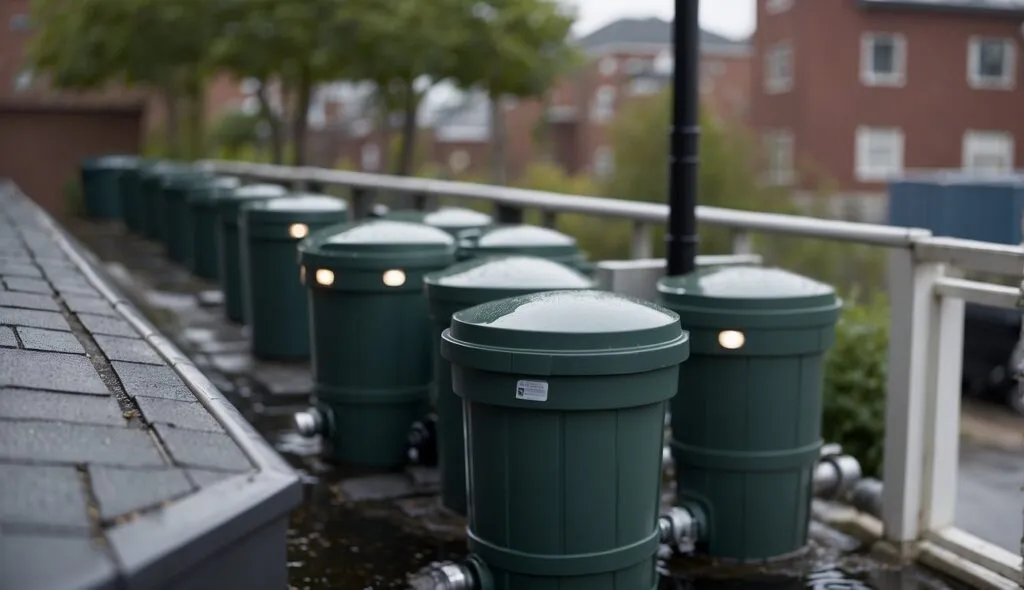If you’re an urban gardener, you know how important it is to have a reliable water source for your plants. However, with limited space and resources, it can be challenging to find a water storage solution that fits your needs. That’s where DIY urban garden water storage comes in. By creating your own water storage system, you can ensure that your plants have the water they need to thrive, even in the midst of a drought.
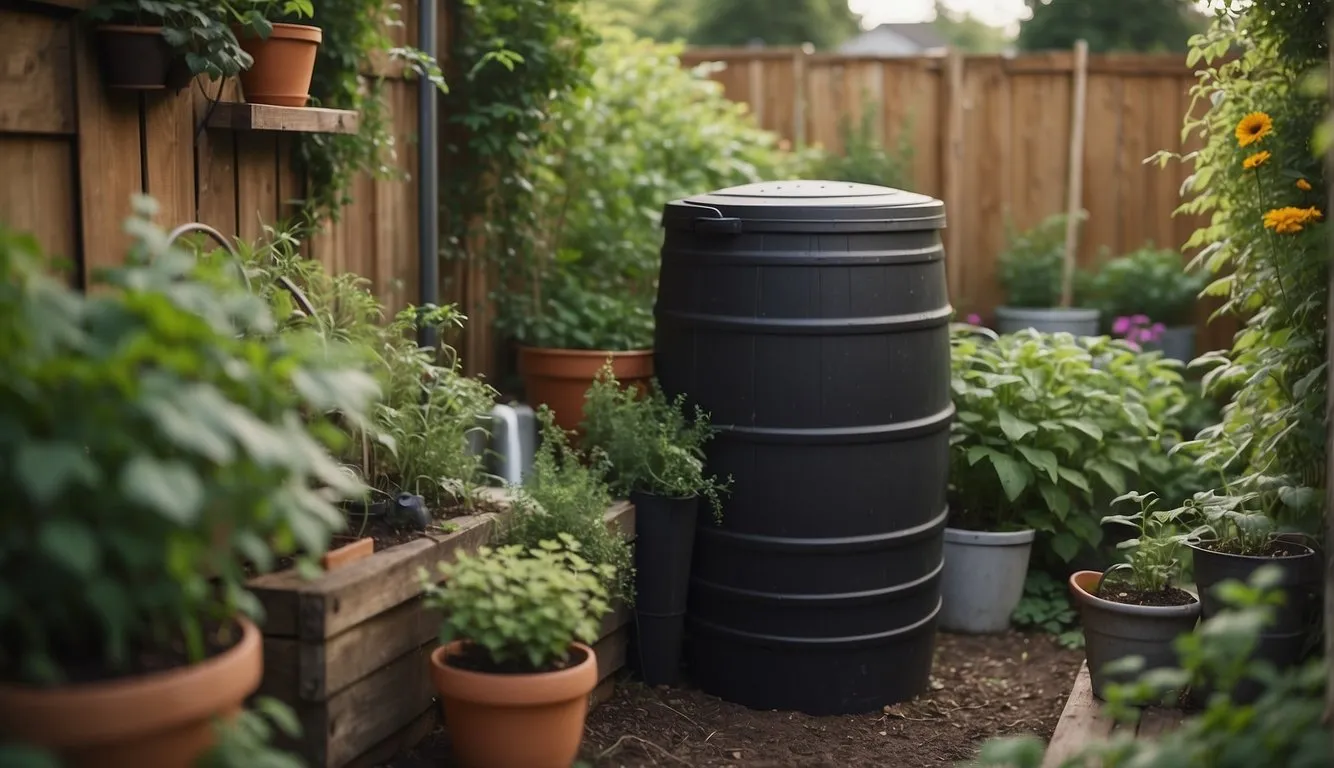
Before you start building your water storage system, it’s essential to plan your urban garden. Consider the size and layout of your garden, as well as the types of plants you want to grow. Different plants have different water requirements, so it’s crucial to choose plants that are suitable for your climate and soil type. Once you have a plan in place, you can start thinking about the best way to store water for your garden.
When it comes to DIY urban garden water storage, there are a variety of containers you can use. Some popular options include rain barrels, plastic storage bins, and even repurposed food-grade containers. It’s essential to choose a container that is large enough to hold the amount of water you need and is made of a material that is safe for storing water. Additionally, you’ll want to consider the location of your container and how it will fit into your garden design.
Table of Contents
Key Takeaways
- Planning is essential for creating a successful urban garden.
- Choosing the right container is crucial for effective water storage.
- DIY urban garden water storage is an eco-friendly and cost-effective solution for small-space gardening.
Planning Your Urban Garden
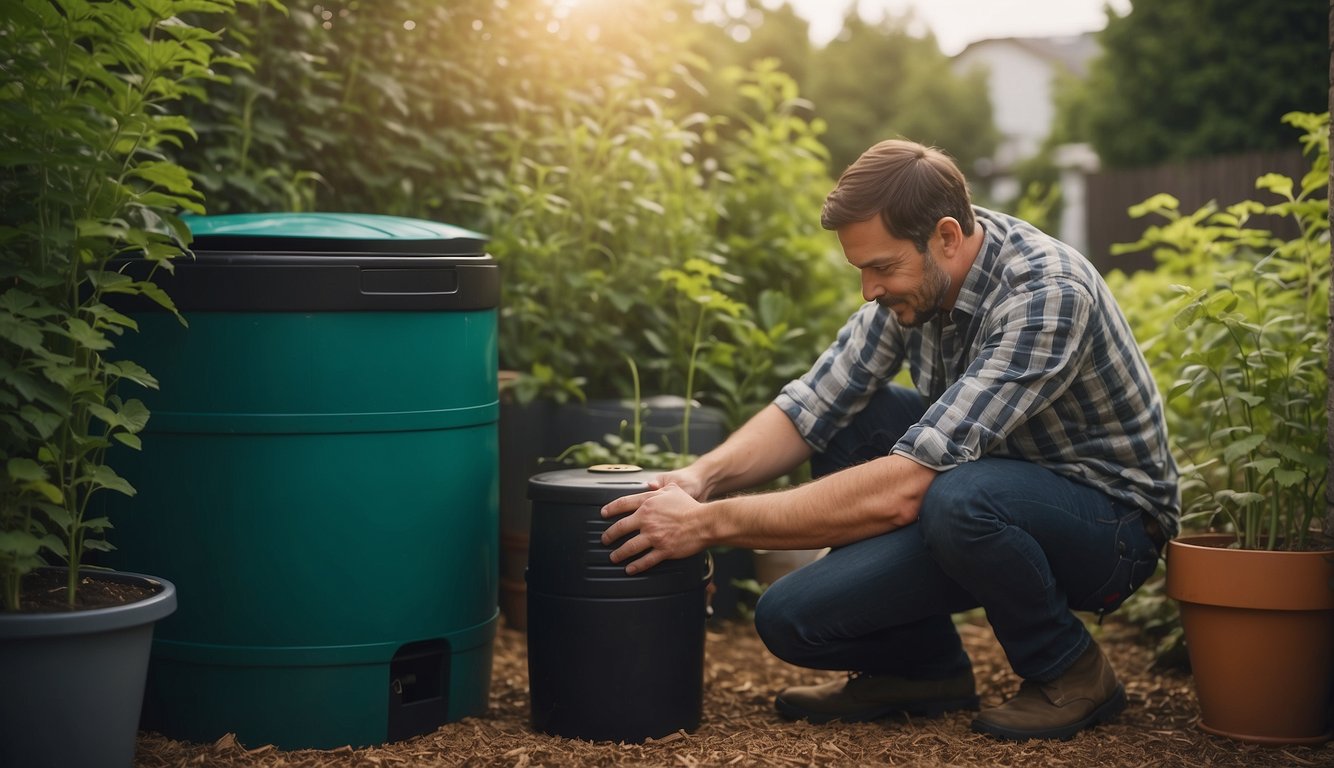
When it comes to planning your DIY urban garden, there are a few key factors to consider to ensure its success. First, we need to find the right location. If you have a small balcony or rooftop, these can be great spaces to utilize for your garden. It’s important to assess the amount of sunlight and shade these areas receive to determine which plants will thrive in these conditions.
Next, we need to consider soil quality. If you’re working with a small space, using high-quality potting mix can help ensure your plants have the nutrients they need to grow. It’s also important to select plants that are suited to your space and the amount of sunlight it receives. Local gardening groups can be a great resource for learning about which plants are best suited to your area.
When it comes to water storage, capacity is a key consideration. We want to make sure we have enough water to keep our plants healthy without overspending on water bills. One affordable and DIY solution is to use rain barrels to collect and store rainwater for later use. Community plots can also be a great option for those who don’t have the space for a garden at home.
Overall, with careful planning and consideration of these factors, we can create a thriving urban garden that not only provides fresh produce but also adds beauty and greenery to our surroundings.
Choosing the Right Containers
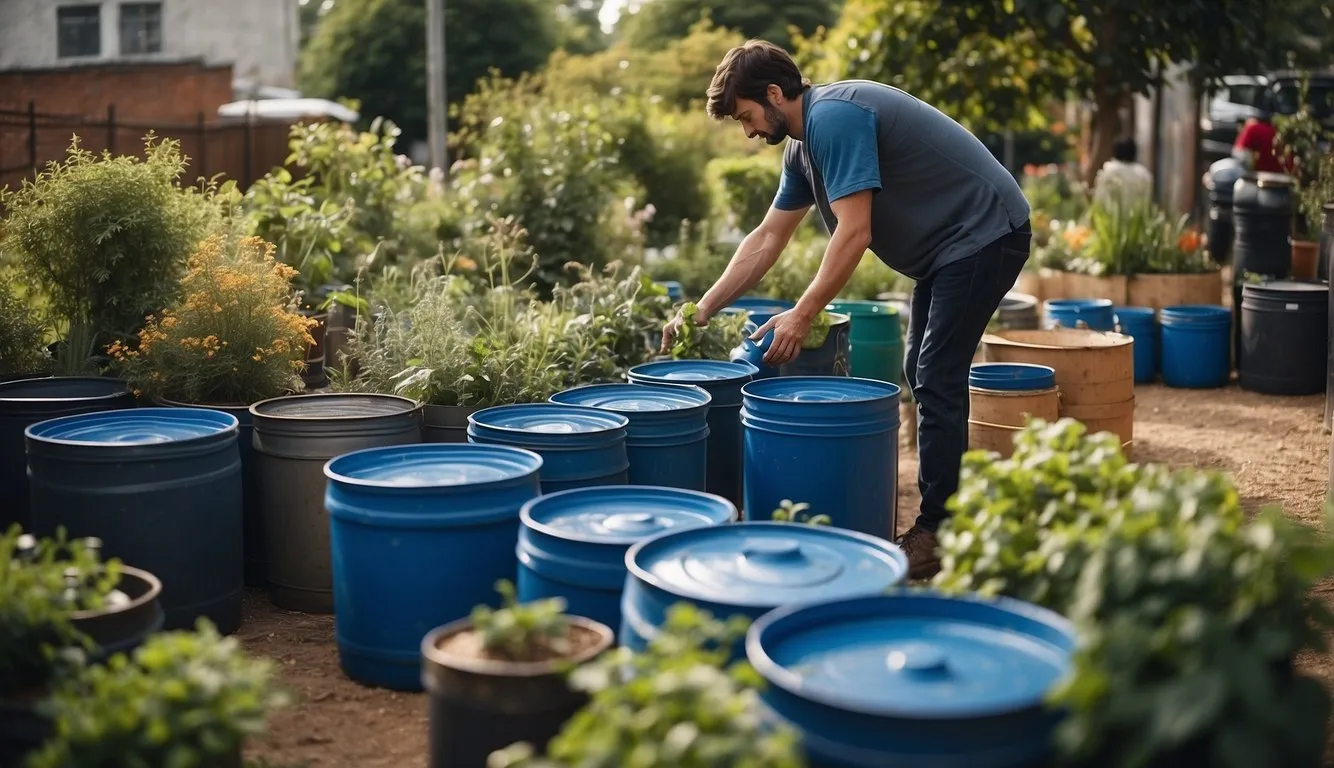
When it comes to DIY urban garden water storage, choosing the right containers is essential. In this section, we will discuss some material considerations and how to maximize space.
Material Considerations
The material of the container is an important factor to consider. Containers made of materials such as plastic, metal, or clay are commonly used for container gardening. Plastic containers are lightweight and easy to move around, but they may not be as durable as other materials. Metal containers can be durable and add a decorative touch to your garden, but they may rust over time. Clay containers can be porous, which can help prevent overwatering, but they can also be fragile and break easily.
Another material consideration is whether to paint or stain your containers. Painting or staining your containers can help protect them from the elements and add a decorative touch to your garden. However, it is important to choose a non-toxic paint or stain that will not harm your plants.
Maximizing Space
When choosing containers for your urban garden, it is important to maximize space. Pots and hanging planters can be a great way to add more plants to your garden without taking up valuable space on the ground. Gutter gardens and vertical gardens are also great options for maximizing space in a small urban garden. Trellises can be used to support climbing plants, which can help maximize space and add visual interest to your garden.
It is also important to consider the capacity of your containers. Larger containers can hold more water, which can be beneficial in areas with limited rainfall. However, larger containers can also be heavy and difficult to move. Smaller containers may be easier to move, but they may require more frequent watering.
In summary, choosing the right containers for your DIY urban garden water storage is essential. When selecting containers, consider the material, whether to paint or stain, and how to maximize space. By following these tips, you can create a beautiful and functional urban garden that will thrive for years to come.
Soil and Nutrients

In an urban garden, the soil quality is vital to plant growth and health. We need to ensure that the soil is rich in nutrients and has the correct pH level for the plants we are growing. The pH level of the soil affects the availability of nutrients to the plants. For instance, if the pH level is too high or too low, the plants will not be able to absorb the nutrients they need to grow.
We can test the pH level of the soil using a soil pH testing kit. The kit will indicate whether the soil is acidic, neutral, or alkaline. Based on the pH level, we can adjust the soil to make it more suitable for the plants we want to grow. We can add lime to raise the pH level or sulfur to lower it. It is important to follow the instructions on the product label and not to overdo it.
Nutrients are essential for plant growth, and we need to ensure that the soil has enough nutrients for the plants to thrive. We can add organic fertilizer to the soil to provide nutrients such as nitrogen, phosphorus, and potassium. Organic fertilizer is made from natural materials such as compost, manure, or bone meal. It is a great way to improve soil quality without using synthetic chemicals.
We should also remove any debris from the soil, such as rocks, roots, or weeds. Debris can prevent the soil from retaining moisture and nutrients. It can also harbor pests and diseases that can harm the plants. By removing debris, we can ensure that the soil is clean and healthy for our plants.
Overall, soil quality is essential to the success of an urban garden. By testing the pH level, adding organic fertilizer, and removing debris, we can ensure that our plants have the nutrients they need to grow and thrive.
Watering and Maintenance
When it comes to DIY urban gardening, efficient water management and regular garden care are crucial for the health and resilience of your plants. In this section, we will cover some tips and techniques for watering and maintaining your urban garden.
Efficient Water Management
Water is a precious resource, especially in urban environments where water sources may be limited or inaccessible. To conserve water and reduce water demand, consider implementing rainwater harvesting techniques such as installing a cistern or rain barrels. These can be used to collect and store rainwater for later use in watering your plants.
Additionally, using filtration systems or filters can help reduce the amount of contaminants in your water supply, which can be especially important if you are using rainwater. Furthermore, using efficient irrigation systems such as drip irrigation or soaker hoses can help reduce water waste due to evaporation or runoff.
Regular Garden Care
Regular maintenance is important for the health and longevity of your urban garden. This includes tasks such as weeding, pruning, and pest control. When watering your plants, be sure to water deeply and infrequently, rather than frequently and shallowly, to encourage deep root growth and reduce the risk of overwatering.
When working in your garden, be sure to wear gloves to protect your hands from pesticides and other chemicals. Additionally, be mindful of pests and diseases that can affect your plants and take appropriate measures to prevent and control them.
Overall, by implementing efficient water management techniques and regular garden care, we can help ensure the health and resilience of our urban gardens.
Plant Selection
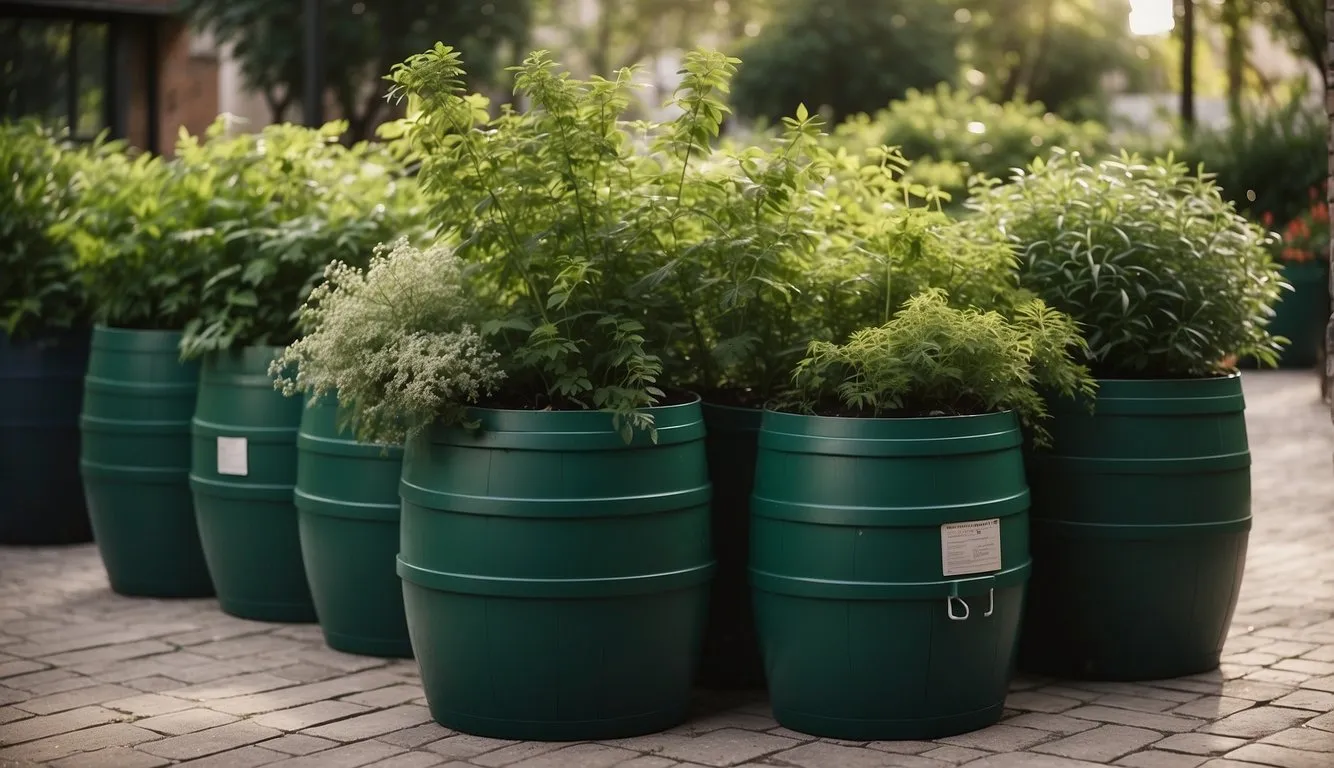
When selecting plants for our DIY urban garden, we need to consider factors such as space, light, and water requirements. We want to choose plants that are well-suited for our garden and will thrive in our environment.
Vegetables such as lettuce, radishes, and carrots are great options for urban gardens. They are easy to grow and don’t require a lot of space. Fruits such as tomatoes and peppers also do well in urban gardens and can be grown in containers.
Herbs such as basil, mint, rosemary, and thyme are great for adding flavor to our meals and can be grown in small containers. They also require minimal maintenance and are great for beginners.
Flowers such as marigolds and petunias can add color and beauty to our garden. They also attract pollinators such as bees and butterflies, which are essential for the health of our garden.
Succulents are another great option for urban gardens. They are low-maintenance and can add a unique touch to our garden.
Overall, we want to choose plants that are well-suited for our space and will provide us with healthy fruits and vegetables. We also want to consider the water requirements of our plants and choose plants that are drought-tolerant or can be easily watered using our DIY water storage system.
Frequently Asked Questions
What are some efficient DIY methods for constructing a water storage tank for my garden?
There are several efficient DIY methods for constructing a water storage tank for your garden. One popular method is using a large plastic barrel or drum. You can easily find these at hardware stores or online. Simply cut a hole in the top of the barrel and attach a spigot near the bottom. Another method is to use a large trash can. You can attach a spigot to the bottom of the can and use a hose to water your plants.
How can I create a water storage system for my urban garden using PVC pipes?
Creating a water storage system for your urban garden using PVC pipes is a great idea. To do this, you will need to gather materials such as PVC pipes, end caps, net pots, perlite, and a heat gun. You can easily build a DIY hydroponic garden tower using these materials. The process is simple and requires only a few materials. First, gather all the materials needed for your project. Then, follow the instructions to build your own water storage system using PVC pipes.
What innovative water storage solutions can I implement in a small home garden?
There are several innovative water storage solutions that you can implement in a small home garden. One solution is to use a rain barrel. You can collect rainwater from your roof and store it in the barrel. Another solution is to use a self-watering container. These containers have a built-in reservoir that holds water, which is then absorbed by the soil as needed. You can also use a vertical garden system that has a built-in water storage system.
How can I design a water reservoir for my garden that also serves as a table?
Designing a water reservoir for your garden that also serves as a table is a great idea. One way to do this is by using a large wooden crate. You can line the crate with a pond liner and fill it with water. Then, place a piece of tempered glass on top of the crate to create a table. Another option is to use a large planter box. You can line the box with a pond liner and fill it with water. Then, place a piece of tempered glass on top of the box to create a table.
What are the best practices for maintaining a DIY water tank for camping to use in urban gardening?
Maintaining a DIY water tank for camping to use in urban gardening requires some best practices. First, make sure to clean the tank regularly to prevent the growth of bacteria and algae. You can use a mixture of bleach and water to clean the tank. Second, make sure to store the tank in a cool, dry place to prevent the growth of mold. Finally, make sure to check the tank regularly for leaks or damage.
How can I ensure a continuous water supply for my garden when I’m away?
Ensuring a continuous water supply for your garden when you’re away requires some planning. One option is to use a drip irrigation system. This system delivers water directly to the roots of your plants, ensuring that they receive the water they need. Another option is to use a self-watering container. These containers have a built-in reservoir that holds water, which is then absorbed by the soil as needed. Finally, you can ask a friend or neighbor to water your plants while you’re away.

